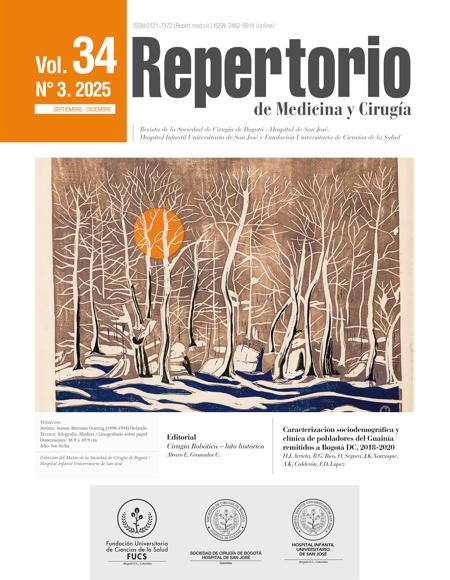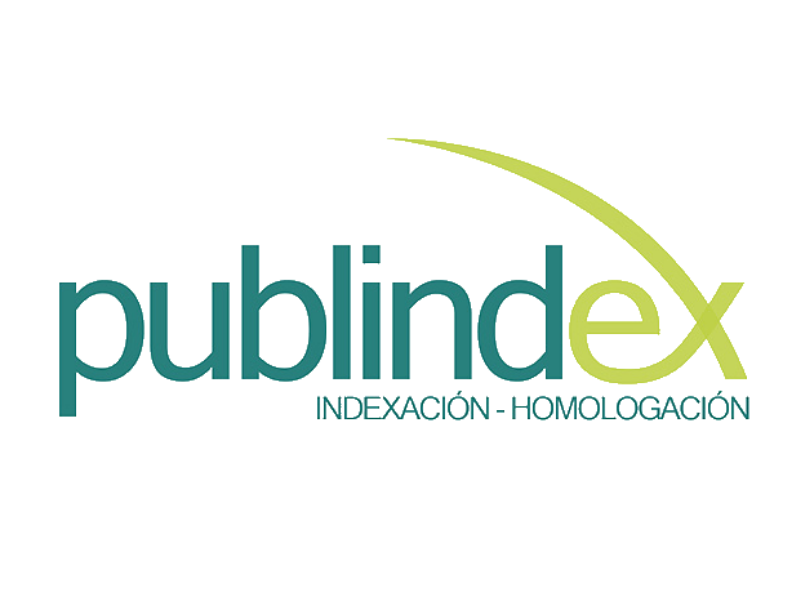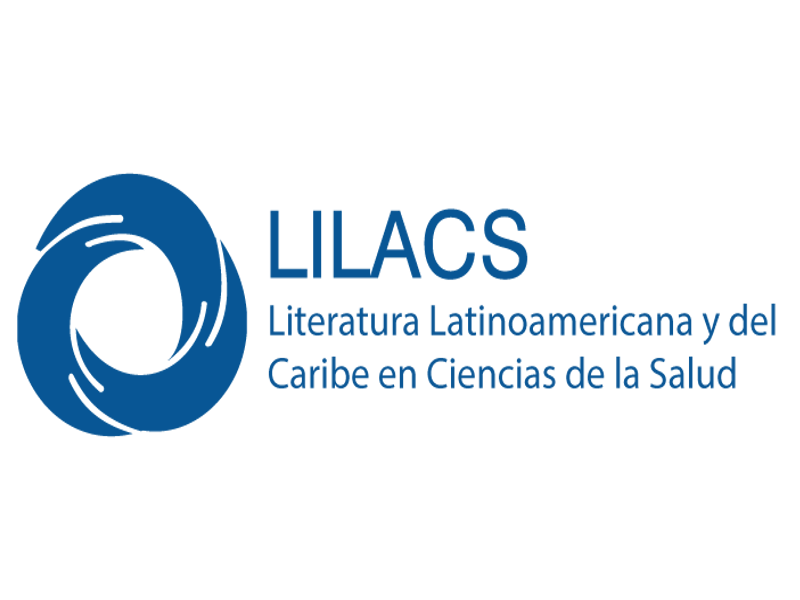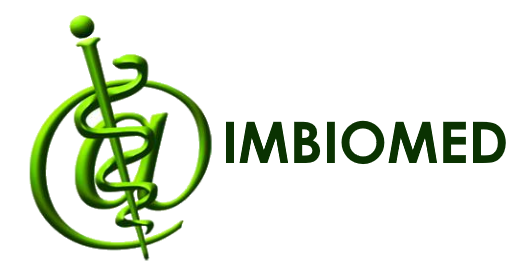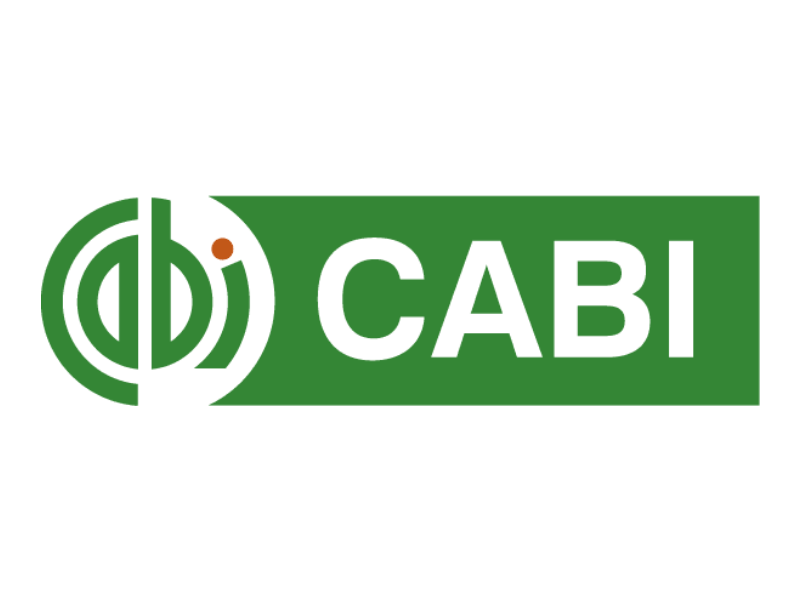Enfoque terapéutico de la anemia falciforme
Therapeutic approach to sickle cell anemia
Esta obra está bajo una licencia internacional Creative Commons Atribución-NoComercial-CompartirIgual 4.0.
Mostrar biografía de los autores
Introducción: la anemia de células falciformes (ACF) es una hemoglobinopatía hereditaria que afecta a más de 20 millones de personas en el mundo. Se caracteriza por anemia hemolítica crónica y crisis vasooclusivas acompañadas de episodios dolorosos. El tratamiento convencional de esta patología incluye terapia de apoyo basada en el manejo de las infecciones y la fiebre, así como suplementos de folato. La terapia modificadora usa la hidroxiúrea, transfusiones sanguíneas y trasplante de células madre. En la actualidad se busca crear alternativas de tratamiento que aumenten el porcentaje de hemoglobina fetal o reducir la polimerización de la hemoglobina. Objetivo: identificar los aspectos básicos de la ACF enfocándose en el tratamiento convencional y las nuevas opciones terapéuticas que se están explorando. Materiales y métodos: se realizó una búsqueda en las bases de datos PubMed, Scielo, Google académico y Scopus de los términos DeCS “anemia de células falciformes” y “enfermedad de células falciformes”, recopilando la información más reciente de los últimos 10 años. Discusión y conclusiones: las nuevas técnicas en el manejo de la ACF han demostrado tener eficacia para impactar en la calidad de vida de los pacientes. El entendimiento acerca del tratamiento, su enfoque convencional y los nuevos métodos han permitido disminuir las complicaciones asociadas y mejorar expectativas de vida.
Visitas del artículo 494 | Visitas PDF 313
Descargas
- Brandow AM, Liem RI. Advances in the diagnosis and treatment of sickle cell disease. J Hematol Oncol. 2022;15(1):20. http://dx.doi.org/10.1186/s13045-022-01237-z
- Kauf TL, Coates TD, Huazhi L, Mody-Patel N, Hartzema AG. The cost of health care for children and adults with sickle cell disease. Am J Hematol. 2009;84(6):323-7. http://dx.doi.org/10.1002/ajh.21408
- Pace BS, Starlard-Davenport A, Kutlar A. Sickle cell disease: progress towards combination drug therapy. Br J Haematol. 2021;194(2):240-51. http://dx.doi.org/10.1111/bjh.17312
- Herrick JB. Peculiar elongated and sickle-shaped red blood corpuscles in a case of severe anemia. 1910. Yale J Biol Med. 2001;74(3):179-84.
- Ingram VM. A specific chemical difference between the globins of normal human and sickle-cell anaemia haemoglobin. Nature. 1956;178(4537):792-4. http://dx.doi.org/10.1038/178792a0
- Payne AB, Mehal JM, Chapman C, Haberling DL, Richardson LC, Bean CJ, et al. Trends in Sickle Cell Disease-Related Mortality in the United States, 1979 to 2017. Ann Emerg Med. 2020;76(3S):S28-36. http://dx.doi.org/10.1016/j.annemergmed.2020.08.009
- Quinn CT, Rogers ZR, McCavit TL, Buchanan GR. Improved survival of children and adolescents with sickle cell disease. Blood. 2010;115(17):3447-52. http://dx.doi.org/10.1182/blood-2009-07-233700
- Gardner K, Douiri A, Drasar E, Allman M, Mwirigi A, Awogbade M, et al. Survival in adults with sickle cell disease in a high-income setting. Blood. 2016;128(10):1436-8. http://dx.doi.org/10.1182/blood-2016-05-716910
- Thein SL, Howard J. How I treat the older adult with sickle cell disease. Blood. 2018;132(17):1750-60. http://dx.doi.org/10.1182/blood-2018-03-818161
- Brousseau DC, Owens PL, Mosso AL, Panepinto JA, Steiner CA. Acute care utilization and rehospitalizations for sickle cell disease. JAMA. 2010;303(13):1288-94. http://dx.doi.org/10.1001/jama.2010.378
- Sil S, Cohen LL, Dampier C. Psychosocial and Functional Outcomes in Youth With Chronic Sickle Cell Pain. Clin J Pain. 2016;32(6):527-33. http://dx.doi.org/10.1097/AJP.0000000000000289
- Smith WR, Penberthy LT, Bovbjerg VE, McClish DK, Roberts JD, Dahman B, et al. Daily assessment of pain in adults with sickle cell disease. Ann Intern Med. 2008;148(2):94-101. http://dx.doi.org/10.7326/0003-4819-148-2-200801150-00004
- Bao EL, Lareau CA, Brugnara C, Fulcher IR, Barau C, Moutereau S, et al. Heritability of fetal hemoglobin, white cell count, and other clinical traits from a sickle cell disease family cohort. Am J Hematol. 2019;94(5):522-7. http://dx.doi.org/10.1002/ajh.25421
- Díaz-Matallana M, Márquez-Benítez Y, Martínez-Lozano JC, Briceño-Balcázar I, Benavides-Benítez E, Bernal JE. Anemia falciforme: una revisión sobre el genotipo de la enfermedad, haplotipos, diagnóstico y estudios asociados. Rev. méd. Chile. 2021;149(9):1322-9. http://dx.doi.org/10.4067/S0034-98872021000901322
- Nascimento CB, Leite A, Moreira J, Cavalcante D, Santos CC. Anemia falciforme e o risco de aterosclerose: o papel do tratamento. Research, Society and Development. 2021;10(16). http://dx.doi.org/10.33448/rsd-v10i16.24164
- Esrick EB, Lehmann LE, Biffi A, Achebe M, Brendel C, Ciuculescu MF, et al. Post-Transcriptional Genetic Silencing of BCL11A to Treat Sickle Cell Disease. N Engl J Med. 2021;384(3):205-15. http://dx.doi.org/10.1056/NEJMoa2029392
- De Alcantara PG, Benitháh I, Silva-Junior AL, Dos Santos R. O papel da biomedicina no diagnóstico e aconselhamento genético nos casos de anemia falciforme. Brazilian Journal of Development. 2021;7(6):56590–605. http://dx.doi.org/10.34117/bjdv7n6-188
- Frangoul H, Altshuler D, Cappellini MD, Chen YS, Domm J, Eustace BK, et al. CRISPR-Cas9 Gene Editing for Sickle Cell Disease and β-Thalassemia. N Engl J Med. 2021;384(3):252-60. http://dx.doi.org/10.1056/NEJMoa2031054
- Shah FT, Sayani F, Trompeter S, Drasar E, Piga A. Challenges of blood transfusions in β-thalassemia. Blood Rev. 2019;37:100588. http://dx.doi.org/10.1016/j.blre.2019.100588
- Rees DC, Williams TN, Gladwin MT. Sickle-cell disease. Lancet. 2010;376(9757):2018-31. http://dx.doi.org/10.1016/S0140-6736(10)61029-X
- Vacca VM, Blank L. Drepanocitosis: situación actual y perspectivas. Nursing. 2017;34(6):32–9. http://dx.doi.org/10.1016/j.nursi.2017.11.010
- Yawn BP, Buchanan GR, Afenyi-Annan AN, Ballas SK, Hassell KL, James AH, Jordan L, et al. Management of sickle cell disease: summary of the 2014 evidence-based report by expert panel members. JAMA. 2014;312(10):1033-48. http://dx.doi.org/10.1001/jama.2014.10517
- Saraf SL, Molokie RE, Nouraie M, Sable CA, Luchtman-Jones L, Ensing GJ, et al. Differences in the clinical and genotypic presentation of sickle cell disease around the world. Paediatr Respir Rev. 2014;15(1):4-12. http://dx.doi.org/10.1016/j.prrv.2013.11.003
- Debaun MR, Galadanci NA, Kassim AA, Jordan LC, Phillips S, Aliyu MH. Primary stroke prevention in children with sickle cell anemia living in africa: the false choice between patient-oriented research and humanitarian service. Trans Am Clin Climatol Assoc. 2016;127:17-33.
- Conran N. Prospects for early investigational therapies for sickle cell disease. Expert Opin Investig Drugs. 2015;24(5):595-602. http://dx.doi.org/10.1517/13543784.2015.1012292
- Tumburu L, Ghosh-Choudhary S, Seifuddin FT, Barbu EA, Yang S, Ahmad MM, et al. Circulating mitochondrial DNA is a proinflammatory DAMP in sickle cell disease. Blood. 2021;137(22):3116-3126. http://dx.doi.org/10.1182/blood.2020009063
- Conran N, Belcher JD. Inflammation in sickle cell disease. Clin Hemorheol Microcirc. 2018;68(2-3):263-99. http://dx.doi.org/10.3233/CH-189012
- do Nascimento Brito MJ, da Silva EO, Ramos Ruiz Diaz PR. Características do tratamento farmacológico dos pacientes com anemia falciforme tratada no hemocentro de João Pessoa, Paraíba, Brasil (2015-2016). Braz. J. Develop. 2020;6(5):29262-74. https://doi.org/10.34117/bjdv6n5-395
- Pasricha SR, Drakesmith H. Hemoglobinopathies in the Fetal Position. N Engl J Med. 2018;379(17):1675-7. https://doi.org/10.1056/NEJMcibr1809628
- Yawn BP, Buchanan GR, Afenyi-Annan AN, Ballas SK, Hassell KL, James AH, et al. Management of sickle cell disease: summary of the 2014 evidence-based report by expert panel members. JAMA. 2014;312(10):1033-48. https://doi.org/10.1001/jama.2014.10517 Erratum in: JAMA. 2014;312(18):1932.
- Alshahrani MS, AlSulaibikh AH, ElTahan MR, AlFaraj SZ, Asonto LP, AlMulhim AA, et al. Ketamine administration for acute painful sickle cell crisis: A randomized controlled trial. Acad Emerg Med. 2022; 29(2):150-8. doi: 10.1111/acem.14382.
- Lee MT, Ogu UO. Sickle cell disease in the new era: advances in drug treatment. Transfus Apher Sci. 2022;61(5):103555. https://doi.org/10.1016/j.transci.2022.103555
- Casella JF, Barton BA, Kanter J, Black LV, Majumdar S, Inati A, et al.. Effect of Poloxamer 188 vs Placebo on Painful Vaso-Occlusive Episodes in Children and Adults With Sickle Cell Disease: A Randomized Clinical Trial. JAMA. 2021;325(15):1513-23. https://doi.org/10.1001/jama.2021.3414
- Niihara Y, Miller ST, Kanter J, Lanzkron S, Smith WR, Hsu LL, et al; Investigators of the Phase 3 Trial of l-Glutamine in Sickle Cell Disease. A Phase 3 Trial of l-Glutamine in Sickle Cell Disease. N Engl J Med. 2018;379(3):226-35. https://doi.org/10.1056/NEJMoa1715971
- Hebbel RP, Belcher JD, Vercellotti GM. The multifaceted role of ischemia/reperfusion in sickle cell anemia. J Clin Invest. 2020;130(3):1062-72. https://doi.org/10.1172/JCI133639
- Tumburu L, Ghosh-Choudhary S, Seifuddin FT, Barbu EA, Yang S, Ahmad MM. Circulating mitochondrial DNA is a proinflammatory DAMP in sickle cell disease. Blood. 2021;137(22):3116-26. https://doi.org/10.1182/blood.2020009063
- de Miranda FR de, Ivo ML, Teston EF, Lino IGT, Mandetta MA, Marcheti MA. Experiência da família no manejo da criança com anemia falciforme: implicações para o cuidado. Revista Enfermagem UERJ. 2020;28:e51594. http://dx.doi.org/10.12957/reuerj.2020.51594
- Souza JM, Rosa PEL, Souza RL, Castro GF. Fisiopatologia da anemia falciforme. Revista Transformar. 2016;8:162-179.
- Aulestia-Viera PV, Alves IDC, Chicrala GM, Santos PS da S, Junior LAVS. Manejo odontológico del paciente con anemia falciforme: revisión integrativa. Revista Odontología. 2020;22(2):92–107. http://dx.doi.org/10.29166/odontologia.vol22.n2.2020-92-107
- Pereira Pacheco D, Cesária da Costa B, Nascimento LCN, Souza TV, Depianti RB, Laignier MR. Relatives of Children Bearing Sickle Cell Anemia: knowledge and practice. J. res.: fundam. care. online. 2019;11(5):1213-1218. https://doi.org/10.9789/2175-5361.2019.v11i5.1213-1218
- Al-Ismaili H, Nasim O, Bakathir A. Jaw Osteomyelitis as a Complication of Sickle Cell Anaemia in Three Omani Patients: Case reports and literature review. Sultan Qaboos Univ Med J. 2017;17(1):e93-e97. https://doi.org/10.18295/squmj.2016.17.01.016
- Kalbassi S, Younesi MR, Asgary V. Comparative evaluation of oral and dento-maxillofacial manifestation of patients with sickle cell diseases and beta thalassemia major. Hematology. 2018;23(6):373-8. https://doi.org/10.1080/10245332.2017.1404219
- Steele C, Sinski A, Asibey J, Hardy-Dessources MD, Elana G, Brennan C, et al. Point-of-care screening for sickle cell disease in low-resource settings: A multi-center evaluation of HemoTypeSC, a novel rapid test. Am J Hematol. 2019;94(1):39-45. https://doi.org/10.1002/ajh.25305
- Silva-Junior AL, Dos Santos R. O papel da biomedicina no diagnóstico e aconselhamento genético nos casos de anemia falciforme. Brazilian Journal of Development. 2021;7(6):56590–605. https://doi.org/10.34117/bjdv7n6-188
- Martin S, Roderick MC, Abel C, Wolters P, Toledo-Tamula MA, Fitzhugh C, et al. Neurocognitive functioning in symptomatic adults with sickle cell disease: A description and comparison with unaffected siblings. Neuropsychol Rehabil. 2020;30(9):1666-81. https://doi.org/10.1080/09602011.2019.1598876
- Vichinsky EP, Neumayr LD, Gold JI, Weiner MW, Rule RR, Truran D, et al. Neuropsychological Dysfunction and Neuroimaging Adult Sickle Cell Anemia Study Group. Neuropsychological dysfunction and neuroimaging abnormalities in neurologically intact adults with sickle cell anemia. JAMA. 2010;303(18):1823-31. https://doi.org/10.1001/jama.2010.562
- Meier ER. Treatment Options for Sickle Cell Disease. Pediatr Clin North Am. 2018;65(3):427-43. https://doi.org/10.1016/j.pcl.2018.01.005
- Houwing ME, de Pagter PJ, van Beers EJ, Biemond BJ, Rettenbacher E, Rijneveld AW, et al. Sickle cell disease: Clinical presentation and management of a global health challenge. Blood Rev. 2019;37:100580. https://doi.org/10.1016/j.blre.2019.05.004
- Soe HHK, Abas AB, Than NN, Ni H, Singh J, Said ARBM, et al. Vitamin D supplementation for sickle cell disease. Cochrane Database Syst Rev. 2020;5(5):CD010858. https://doi.org/10.1002/14651858.CD010858
- Kavanagh PL, Fasipe TA, Wun T. Sickle Cell Disease: A Review. JAMA. 2022;328(1):57-68. https://doi.org/10.1001/jama.2022.10233
- Estcourt LJ, Kimber C, Hopewell S, Trivella M, Doree C, Abboud MR. Interventions for preventing silent cerebral infarcts in people with sickle cell disease. Cochrane Database Syst Rev. 2020;4(4):CD012389. https://doi.org/10.1002/14651858
- Linder GE, Chou ST. Red cell transfusion and alloimmunization in sickle cell disease. Haematologica. 2021;106(7):1805-15. https://doi.org/10.3324/haematol.2020.270546
- Powars DR, Weiss JN, Chan LS, Schroeder WA. Is there a threshold level of fetal hemoglobin that ameliorates morbidity in sickle cell anemia? Blood. 1984;63(4):921-6
- Steinberg MH, Chui DH, Dover GJ, Sebastiani P, Alsultan A. Fetal hemoglobin in sickle cell anemia: a glass half full? Blood. 2014;123(4):481-485. https://doi.org/10.1182/blood-2013-09-528067
- Altrock PM, Brendel C, Renella R, Orkin SH, Williams DA, Michor F. Mathematical modeling of erythrocyte chimerism informs genetic intervention strategies for sickle cell disease. Am J Hematol. 2016;91(9):931-7. https://doi.org/10.1002/ajh.24449
- Sankaran VG, Menne TF, Xu J, Akie TE, Lettre G, Van Handel B, et al. Human fetal hemoglobin expression is regulated by the developmental stage-specific repressor BCL11A. Science. 2008;322(5909):1839-42. https://doi.org/10.1126/science.1165409
- Menzel S, Garner C, Gut I, Matsuda F, Yamaguchi M, Heath S, et al. A QTL influencing F cell production maps to a gene encoding a zinc-finger protein on chromosome 2p15. Nat Genet. 2007;39(10):1197-9. https://doi.org/10.1038/ng2108
- Uda M, Galanello R, Sanna S, Lettre G, Sankaran VG, Chen W, et al. Genome-wide association study shows BCL11A associated with persistent fetal hemoglobin and amelioration of the phenotype of beta-thalassemia. Proc Natl Acad Sci U S A. 2008;105(5):1620-5. https://doi.org/10.1073/pnas.0711566105
- Brendel C, Guda S, Renella R, Bauer DE, Canver MC, Kim YJ, et al. Lineage-specific BCL11A knockdown circumvents toxicities and reverses sickle phenotype. J Clin Invest. 2016;126(10):3868-78. https://doi.org/10.1172/JCI87885
- Guda S, Brendel C, Renella R, Du P, Bauer DE, Canver MC, et al. miRNA-embedded shRNAs for Lineage-specific BCL11A Knockdown and Hemoglobin F Induction. Mol Ther. 2015;23(9):1465-74. https://doi.org/10.1038/mt.2015.113
- Canver MC, Smith EC, Sher F, Pinello L, Sanjana NE, Shalem O, et al. BCL11A enhancer dissection by Cas9-mediated in situ saturating mutagenesis. Nature. 2015;527(7577):192-7. https://doi.org/10.1038/nature15521
- Wu Y, Zeng J, Roscoe BP, Liu P, Yao Q, Lazzarotto CR, et al. Highly efficient therapeutic gene editing of human hematopoietic stem cells. Nat Med. 2019;25(5):776-83. https://doi.org/10.1038/s41591-019-0401-y
- Cavazzana M, Bushman FD, Miccio A, André-Schmutz I, Six E. Gene therapy targeting haematopoietic stem cells for inherited diseases: progress and challenges. Nat Rev Drug Discov. 2019;18(6):447-62. https://doi.org/10.1038/s41573-019-0020-9
- Hsieh MM, Bonner M, Pierciey FJ, Uchida N, Rottman J, Demopoulos L, et al. Myelodysplastic syndrome unrelated to lentiviral vector in a patient treated with gene therapy for sickle cell disease. Blood Adv. 2020;4(9):2058-63. https://doi.org/10.1182/bloodadvances.2019001330
- Nachbaur D, Kropshofer G, Heitger A, Lätzer K, Glassl H, Ludescher C, et al. Phenotypic and functional lymphocyte recovery after CD34+-enriched versus non-T cell-depleted autologous peripheral blood stem cell transplantation. J Hematother Stem Cell Res. 2000;9(5):727-36. https://doi.org/10.1089/15258160050196777
- Hutchaleelaha A, Patel M, Washington C, Siu V, Allen E, Oksenberg D, et al. Pharmacokinetics and pharmacodynamics of voxelotor (GBT440) in healthy adults and patients with sickle cell disease. Br J Clin Pharmacol. 2019;85(6):1290-302. https://doi.org/10.1111/bcp.13896
- Rolan PE, Mercer AJ, Wootton R, Posner J. Pharmacokinetics and pharmacodynamics of tucaresol, an antisickling agent, in healthy volunteers. Br J Clin Pharmacol. 1995;39(4):375-80. https://doi.org/10.1111/j.1365-2125.1995.tb04465.x
- Kato J, Peters M, Mendelsohn G, Saiyed R, Wang X, Conrey K, et al. Phase 1 Clinical Trial Of The Candidate Anti-Sickling Agent Aes-103 In Adults With Sickle Cell Anemia. Blood 2013;122(21):1009. https://doi.org/10.1182/blood.V122.21.1009.1009
- Oksenberg D, Dufu K, Patel MP, Chuang C, Li Z, Xu Q, et al. GBT440 increases haemoglobin oxygen affinity, reduces sickling and prolongs RBC half-life in a murine model of sickle cell disease. Br J Haematol. 2016;175(1):141-53. https://doi.org/10.1111/bjh.14214
- Howard J, Ataga KI, Brown RC, Achebe M, Nduba V, El-Beshlawy A, et al. Voxelotor in adolescents and adults with sickle cell disease (HOPE): long-term follow-up results of an international, randomised, double-blind, placebo-controlled, phase 3 trial. Lancet Haematol. 2021;8(5):323-33. https://doi.org/10.1016/S2352-3026(21)00059-4
